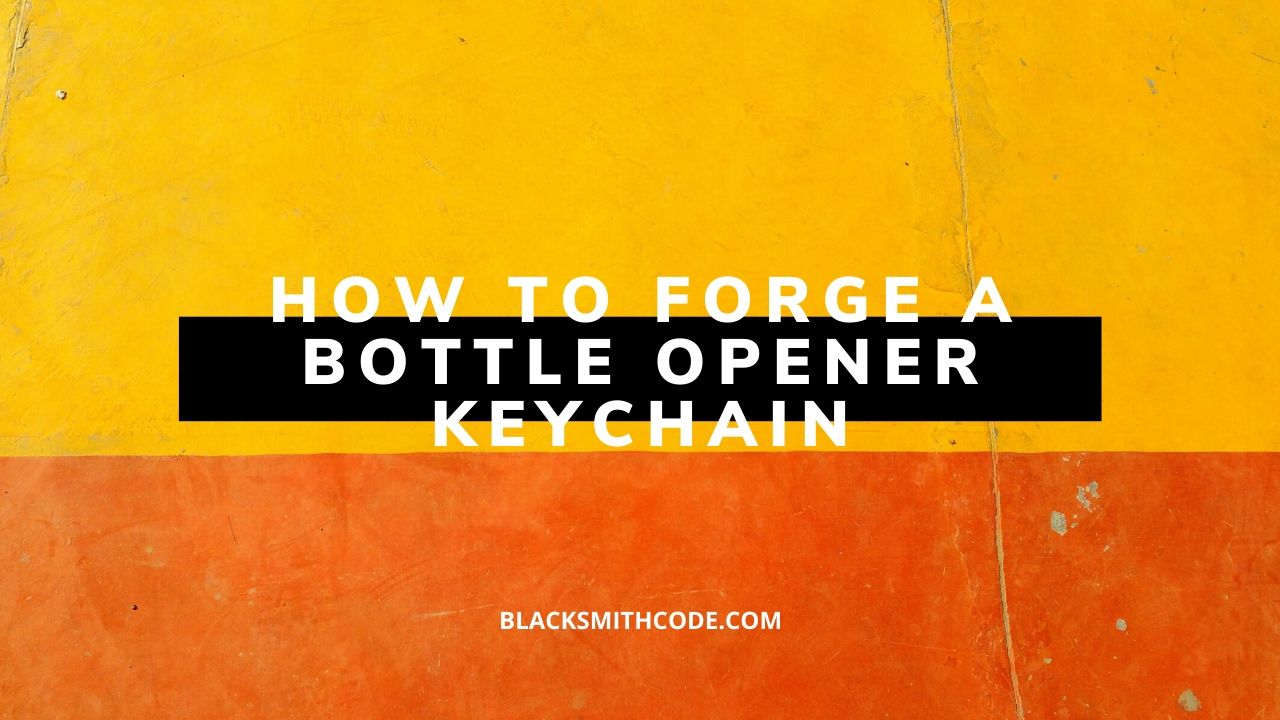Forging is one of the basic techniques in blacksmithing. Blacksmiths forge several objects, including a bottle keychain opener. A bottle opener keychain is one of the bestselling blacksmithing items; hence a lot of blacksmiths spend time in mastering how to forge it.
Forging a bottle keychain opener requires no complicated step. It only requires your basic forging technique, the right tools, the right materials, as well as basic knowledge on the forging of bottle keychain openers.
Highlighted below are simple steps that can guide you on how to forge a bottle opener keychain.
Step 1: Get The Right Materials and Make the Right Measurement
One of the necessary steps in forging any blacksmithing tool is getting the right material. The tools needed include hammer, anvil, vise, and of course, a forge. After this, get 1018 mild steel that is about 0.5 inches wide, 1/8-inch-thick, and about 4 inches in length.
Step 2: Use Your Forge
Employ the use of your forge to heat the mild steel to a temperature around the region of 1800-20000F. It is best to make use of forge master gas forge with a double burner.
Step 3: Hammering
Once you have successfully heated the metal to this temperature, the next thing to do is to hammer the metal. Ensure that you beat in such a way that both ends become flat. Also, ensure that it gets full and flat enough for it to enter under the bottle cap quickly.
Step 4: Bending
You would most likely have to heat the metal again for it to bend easily. Make use of a bending fork to twist the bottle opener to create the working ends. Return it to the forge after this and heat again. After it gets heated enough, you should quickly quench the metal and bend the working end again. This second bending will ensure that the metal completely takes the desired shape with enough strength in its working period.
Step 5: Hardening The Steel
Without this step, the working end of the bottle opener might be too brittle and consequently break off easily. Take the bottle opener back into the forge and quench once it gets to a pliable temperature. The repeated heating and quenching will ensure that the opener gathers enough hardness.
Step 6: Finishing Touches
This step is the most flexible part of the forging. You can decide to be very creative about the complementing designs you want to give to your bottle opener. Ensure that the steel is well polished so the bottle opener will be attractive and neat. You can dunk the bottle opener in vegetable oil to help it create resistance to moisture.
Conclusion
A bottle opener keychain is one of the most marketable blacksmithing products. Its making is relatively easy compared to when you are forging other materials. It is highly commercial, and it is easy to ship it to different locations. Hence, investing your time in learning how to form it is worth it. The steps above can succinctly guide you through the process.

